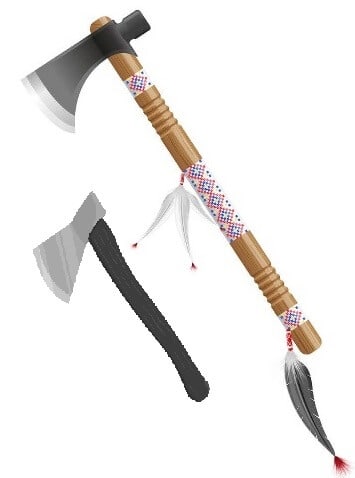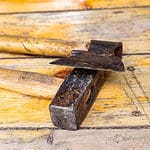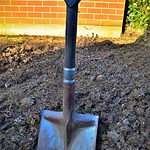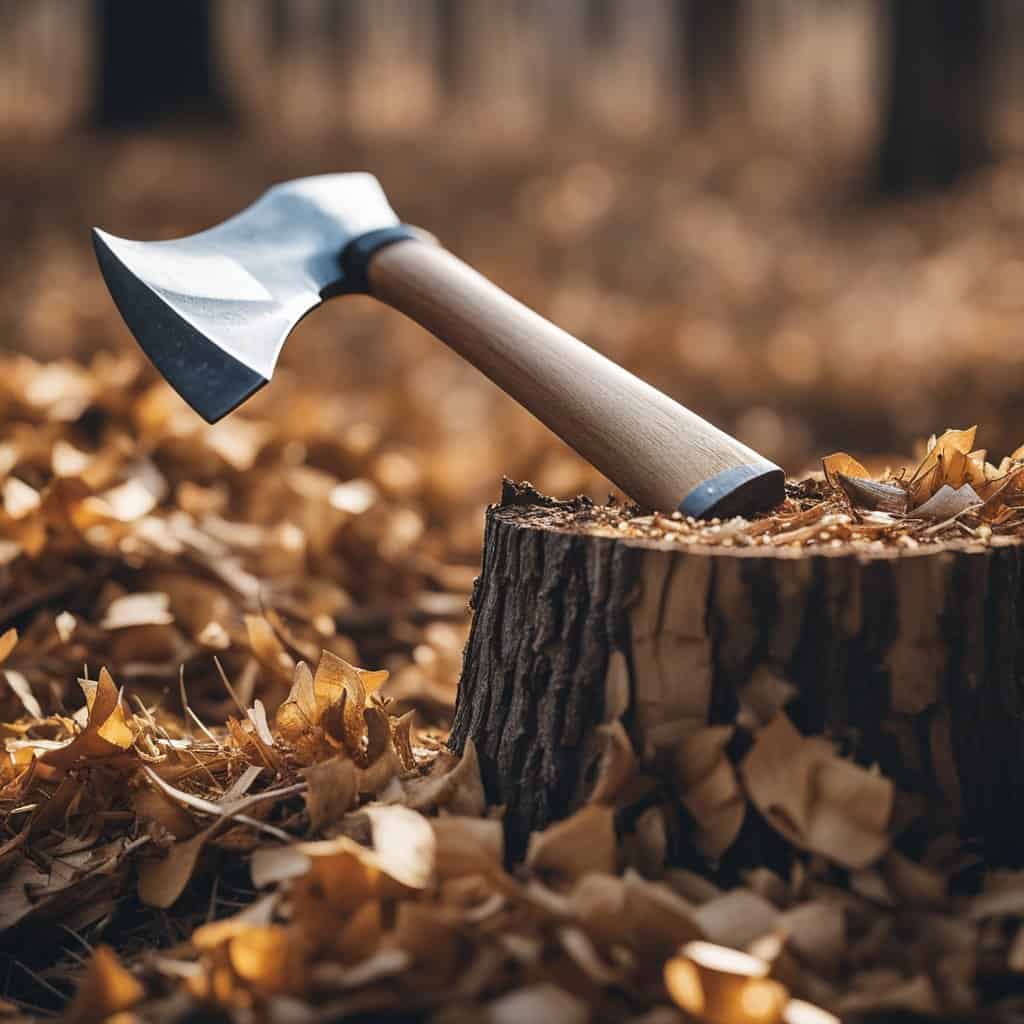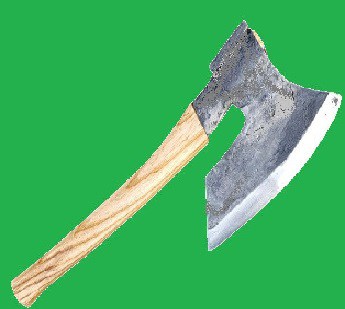Tomahawks and hatchets have been used for centuries to chop wood, hunt, and for combat. Although the two look similar, the two tools have distinct differences, the primary difference being the design of their heads and handles.
Table of Contents
Tomahawks and Hatchets
Historically hatchets were mainly used for chopping and splitting wood, while tomahawks were seen as weapons for combat. Today, hatchets are still used for chopping and splitting wood, as is the tomahawk. Both tools are an integral part of axe-throwing competitions as well. You will often see that Tomahawks are often decorated with feathers and beads, while hatchets typically do not feature any decoration.
The primary difference between hatchets and tomahawks is the length of their handles and their heads’ design. Hatchets and Tomahawks both have single headed blades with metal construction for durability and can be used in various activities such as camping, mountaineering, hunting, warring, and splitting wood.
Hatchets have symmetrical heads, whereas tomahawks feature a hatchet like shape with a slender blade and an angled back edge. A tomahawk’s blade is more slender, with an angled back edge that widens toward the tip, giving it a hatchet like appearance.
Hatchets usually have short handles, whereas tomahawks often feature longer handles up to two feet long. The length and shape of the handle give tomahawks better balance and accuracy in throwing activities and chopping.
Usage
Both hatchets and tomahawks fulfill various cutting, chopping, and hammering tasks. Hatchets are used for close range cutting and chopping activities due to their shorter handles. As Tomahawks have longer handles, they are more suited to throwing as they can reach further distances. Tomahawks are also better for precision tasks such as carving or splitting small pieces of wood due to their shape. Tomahawks are also commonly used for camping and mountaineering purposes due to their versatility, weight, and size.
Tomahawk – Axe throwing, carving, chopping
Hatchet- Chopping and splitting wood, creating kindling, hammering, axe throwing, and light digging
Pros and Cons Of A Hatchet And Tomahawk
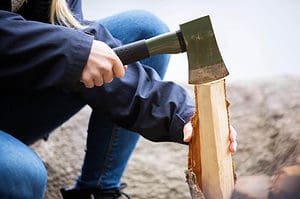
Pros of a hatchet
1. Hatchets are typically smaller, lighter, and more portable.
2. Hatchets usually have a single cutting edge, making them easier to maintain and sharpen.
3. Hatchets are better suited for chopping wood and small branches.
4. Hatchets can be used with one hand, making them more versatile when working in tight spaces.
5. Hatchets can be used for light digging tasks such as creating shallow trenches or furrows in the ground.
Cons of a hatchet
1. Hatchets have shorter handles, making them less accurate when throwing over a distance.
2. The thicker handle of hatchets make them more challenging to control for precision tasks such as carving or splitting small pieces of wood.
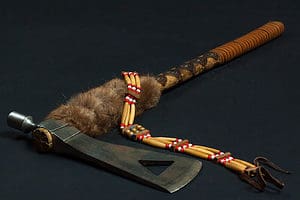
Pros of a tomahawk
1. Tomahawks are often larger and heavier than hatchets, so they may be less convenient to carry around in a backpack or toolbox.
2. Tomahawks usually have two cutting edges, requiring additional maintenance to keep them sharpened and balanced correctly on both sides of the head.
3. Tomahawks are designed for throwing, so they are less effective for chopping or hammering.
4. Tomahawks are better suited for precision tasks such as carving wood and splitting small pieces due to their sharp edge.
5. Tomahawks have a more ergonomic handle, allowing the user to keep a better grip on the tool.
Cons Of A Tomahawk
1. The long handle of a tomahawk can sometimes make it unwieldy or hard to control in close quarters compared to a smaller hatchet.
2. The weight distribution of most tomahawks makes it more tiring when used for extended periods than with a hatchet.
Final Thoughts
Tomahawks and hatchets have pros and cons, but with careful selection, either tool can serve you well on many occasions. Hatchets are generally better for close range cutting and chopping activities, while tomahawks are more suited to throwing or precision work. Both hatchets and tomahawks can make great additions to a camping kit or bug-out bag. If you enjoyed this guide, you may also be interested in our guide The Woodsman Axe: A Tool of the Ages.

